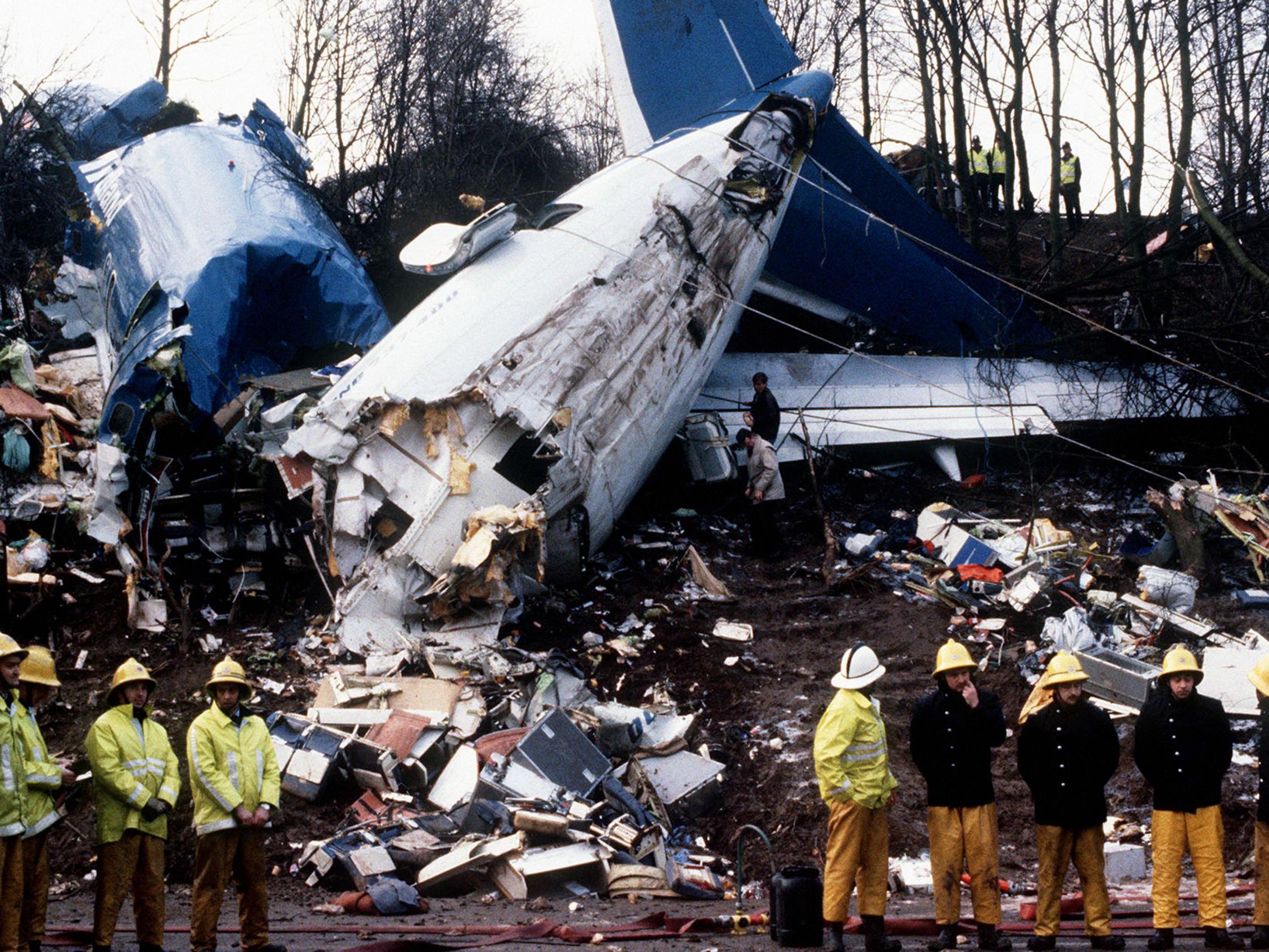Kegworth air disaster: What happened and how did the plane crash change airline safety?
Pilot error blamed for smash into M1 embankment that killed 47 and left 74 seriously injured

Your support helps us to tell the story
From reproductive rights to climate change to Big Tech, The Independent is on the ground when the story is developing. Whether it's investigating the financials of Elon Musk's pro-Trump PAC or producing our latest documentary, 'The A Word', which shines a light on the American women fighting for reproductive rights, we know how important it is to parse out the facts from the messaging.
At such a critical moment in US history, we need reporters on the ground. Your donation allows us to keep sending journalists to speak to both sides of the story.
The Independent is trusted by Americans across the entire political spectrum. And unlike many other quality news outlets, we choose not to lock Americans out of our reporting and analysis with paywalls. We believe quality journalism should be available to everyone, paid for by those who can afford it.
Your support makes all the difference.Thirty years ago, 47 people were killed and 74 injured when a British Midland Boeing 737-400 came down and crashed into an embankment of the M1 - a crash that would change the nature of airline safety.
As the evening meal was being served, Flight 92 from Heathrow to Belfast suffered engine trouble.
It was diverted to to East Midlands Airport when it came down near Kegworth in Leicestershire on the night of 8 January 1989, with 126 people on board.
Here The Independent takes a look at the crash.
What happened?
The Boeing’s pilots mistakenly shut down a correctly-working right-hand engine after loud bangs were heard coming from its counterpart on the left said of the aircraft.
They had been confused by a change to the ventilation system on the 400 model compared with earlier versions of the 737.
When captain Kevin Hunt and first officer David McClelland broadcast to the cabin that this action had been taken, the passengers and cabin crew did not alert him to the error, even though some of them had spotted the original malfunction from their seats.
A report by the Air Accidents Investigation Branch subsequently concluded the reason for this was that passengers are typically unlikely to believe they could contribute to a pilot’s understanding of a situation, while cabin crew would be concerned that any intrusion into the flight deck during busy periods could be a distraction.
The aircraft was travelling at 130mph when it came down, hitting a field on the southbound side of the M1, plunging through trees and smashing into the embankment on the opposite carriageway. The front of the plane broke away from the main body on impact.
On the road, two drivers were able to use their hazard lights to slow oncoming traffic.
How did the industry change as a result?
In the aftermath of the crash, airlines across the world began giving Cockpit Resource Management training to their staff.
The programme encourages the sharing of information between pilots in the cockpit and empowers cabin crew to challenge flight crew if they believe a mistake has been made.
Although 47 people were killed and 74 suffered serious injuries, some passengers escaped with minor cuts and bruises.
Nottingham surgeon Professor Angus Wallace subsequently studied the incident and found that many people had not adopted a brace position, causing their feet to shoot forward under the seat in front. This has since become part of standard protocol for airline safety.
Carriers now place much greater emphasis on encouraging passengers to take protective action post-Kegworth, introducing pictorial safety briefing cards behind each seat.
How was the anniversary observed?
Wreaths were laid by families, emergency service personnel and council workers at a memorial site in the Leicestershire village.
The names of those who died were read out during a 45-minute service at St Andrew’s Church, followed by a minute’s silence.
Around 300 people attended the service, which was led by Reverend Lauretta Wilson, during which hymns were sung, prayers read and candles lit.
Some of those who had flown from Northern Ireland to attend the commemorations wiped away tears as people paid their respects.
“Kegworth has never forgotten that fateful night on January 8 1989,” the Reverend Wilson said. “The dreadful event shook all of our communities.”
Survivor Leslie Bloomer, 57, remembered his ordeal at Tuesday memorial: “We could see small bits of debris, sparks coming out of the left-hand engine. You could feel [the plane] wavering as the pilot struggled to keep it straight and then it thumped on the ground with an awful bang. When it came to a halt I suddenly realised ‘I’m sitting here alive’… There was a hole at the side of the plane which I started to clamber out through.
“This guy came walking up and just grabbed me and carried me down the banking.”
Join our commenting forum
Join thought-provoking conversations, follow other Independent readers and see their replies
Comments